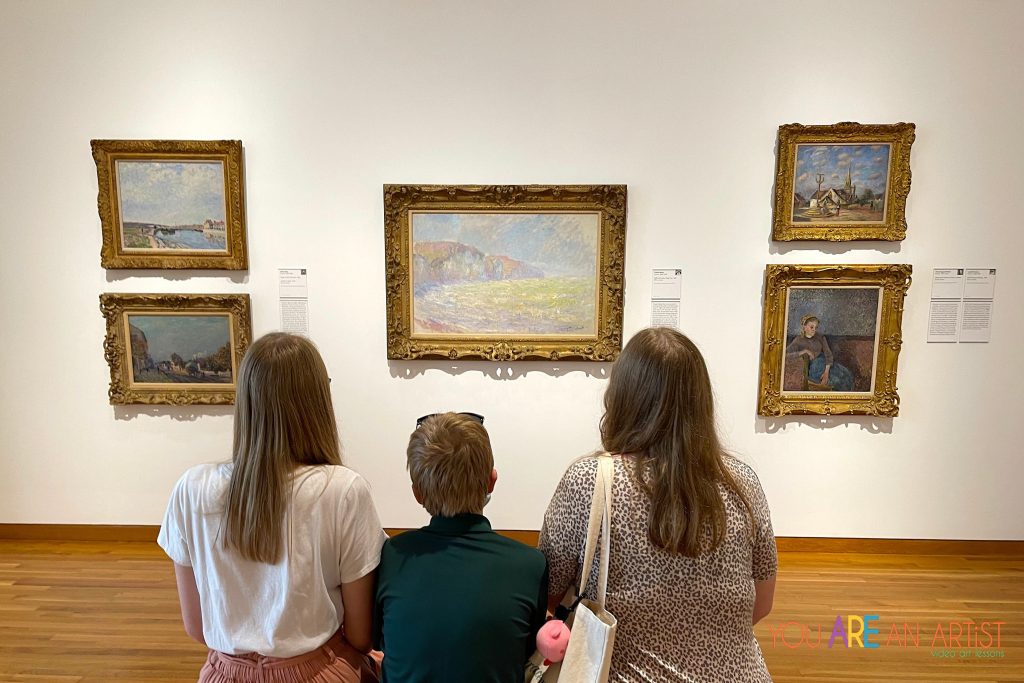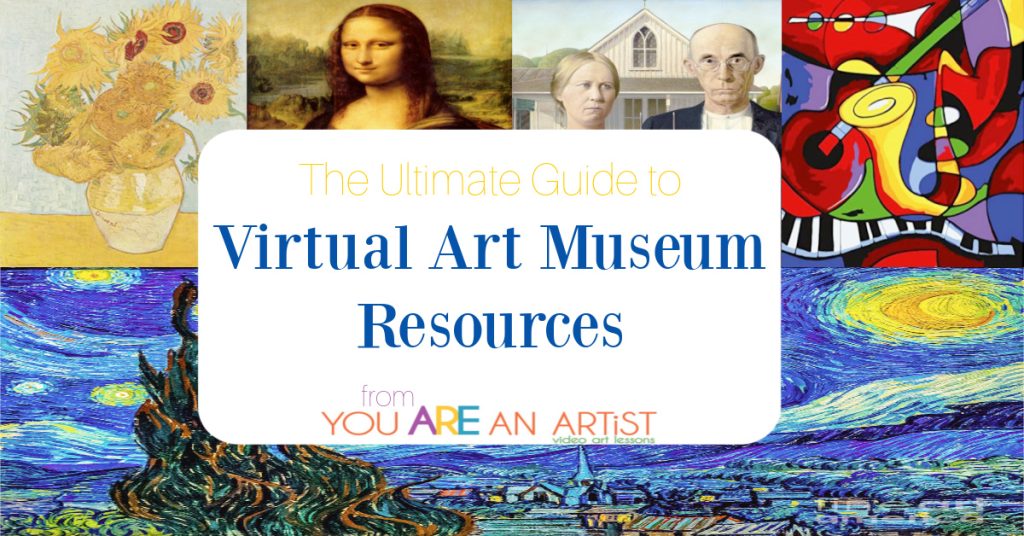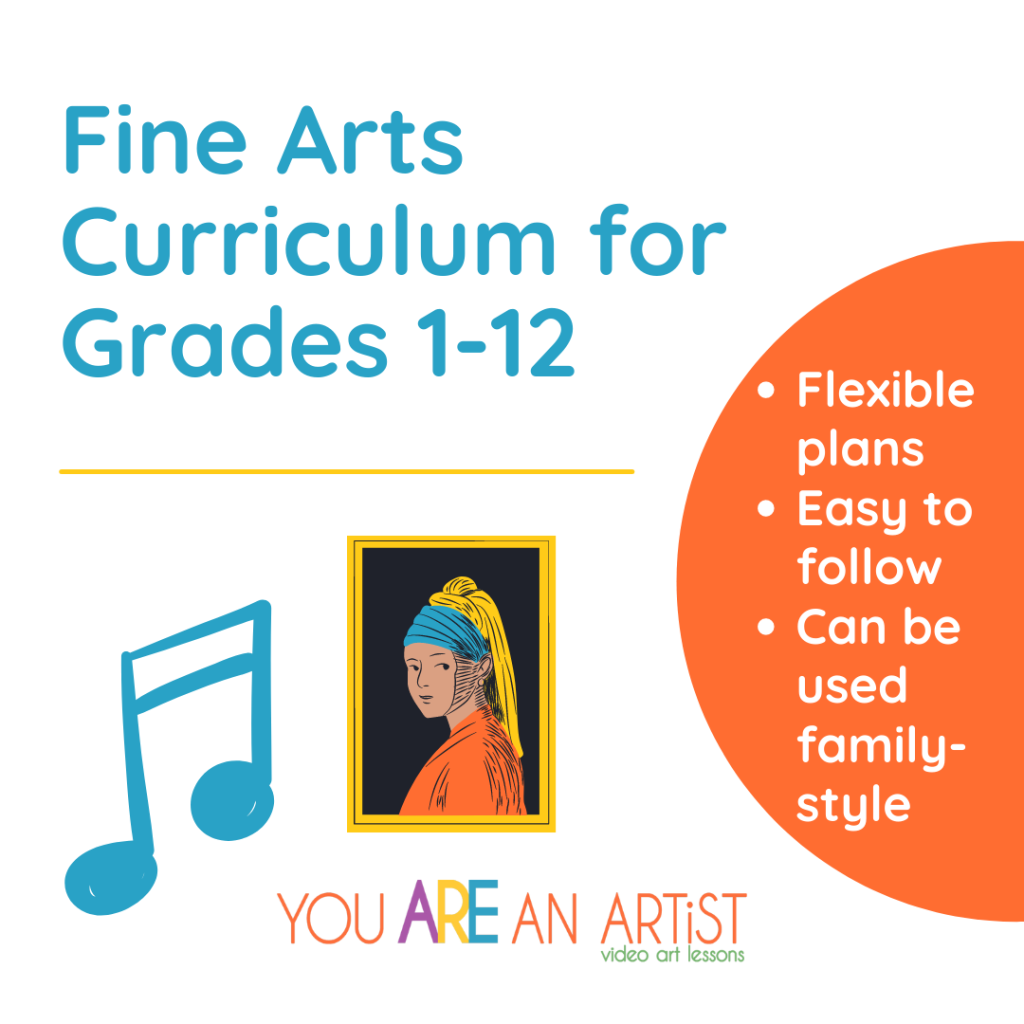Building a love for beautiful art is something that happens over a period of time for our children. This guide has everything you need for engaging art appreciation in your homeschool.
When we first started homeschooling, art appreciation appealed to me, but I didn’t know where to start. Sometimes you just need to dive in and give it a try and that is exactly what I did with my children.
Even though I had no real background in this subject, I did have a passionate interest in paintings and art history. I had a desire to learn more and along with my children we learned together as the years went along.
What did we do to get started? What method helped us get our feet wet with art appreciation? How did we progress slowly through the years? What things have stuck with us?
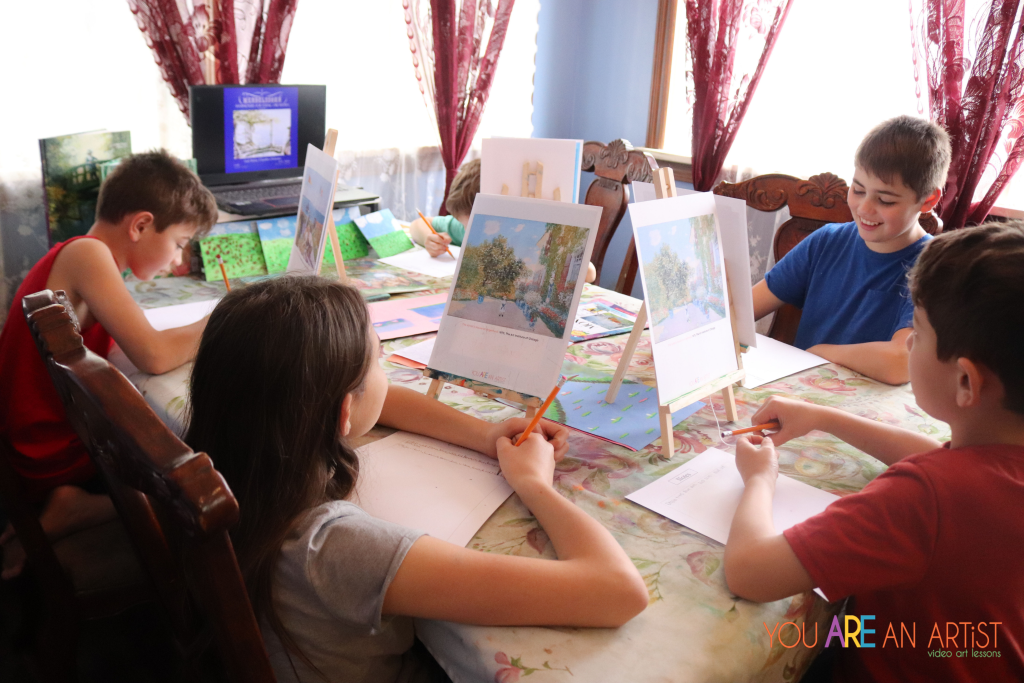
Homeschool Art Appreciation: Getting Started
- Use a series of artwork from one artist and that will help define for your children the artist’s style. Pick four paintings you like and share those one at a time.
- Picture Study or Narration: Closely observe and enjoy one painting at a time, increasing your child’s awareness of what it means to have a “style”. View the artwork together and have your children tell you what they see in the painting. Many people call this narration or picture study. Most paintings have some sort of story to tell. Encourage your children to try to guess the painting’s story.
- Keep the artwork you are studying in plain sight for a period of time. Make the painting your computer’s desktop background or have a print of the painting in a prominent place where you spend time each day.
- After you have studied two or more painters, begin to compare and contrast the artists. How are they different and how are they similar? Over time this will help your child learn more about the periods of art history. But in the beginning, just make casual observations.
- Come up with a way to review the artists from time to time. Keep your prints in a notebook, binder or folder. Pull them out at the end of each term and spend a few minutes going over the various paintings and artists. This is a fun time for children once they start to accumulate a number of artists. Keep the mood light and do not make it like a test.
When my children were younger, I chose an artist where their style was particularly apparent and easy to see. We studied Mary Cassatt, Vincent Van Gogh, Pablo Picasso, Pierre Renoir and a few others. These artists appealed not only in subject matter but in showing a distinct style.
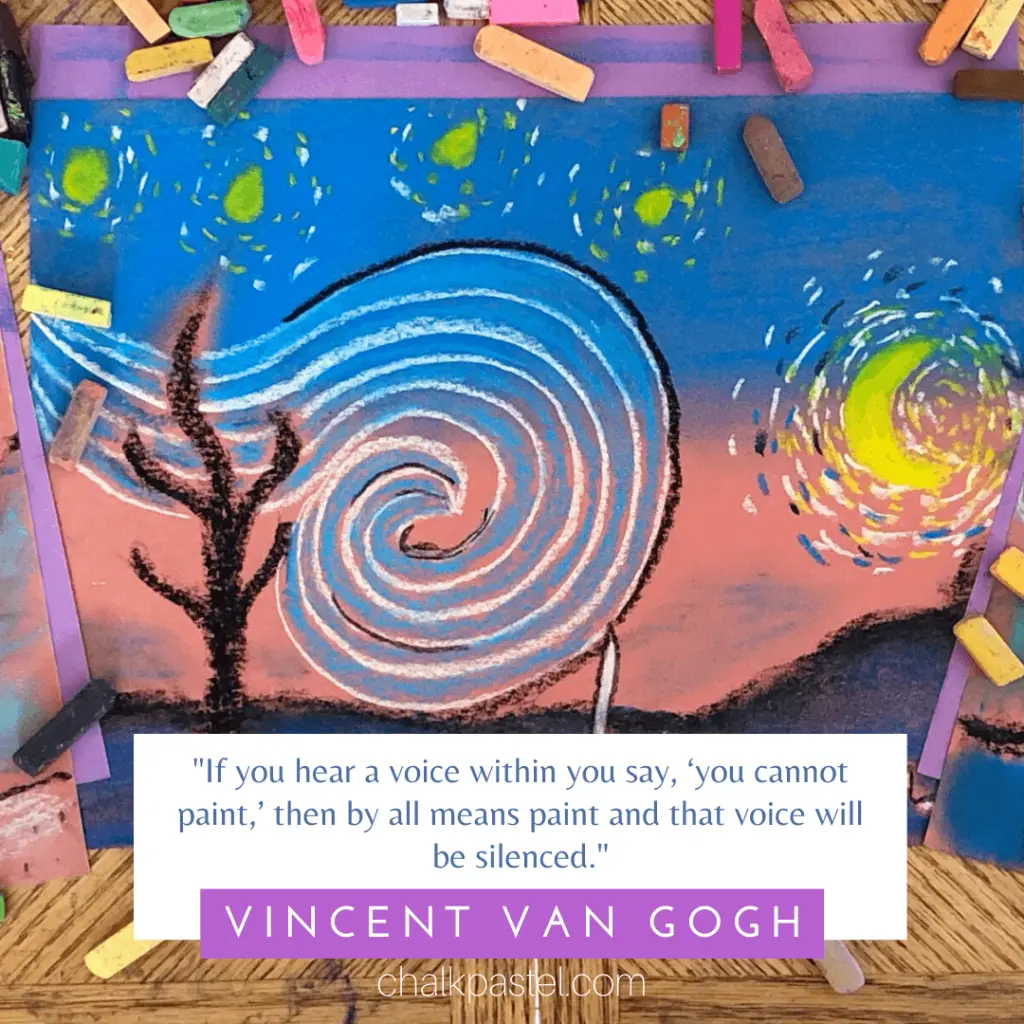
These early years were focused on gaining an interest in art and not so much in learning about art movements or art history. The viewing of artwork and then perhaps learning the title of the painting and the artist’s name were about all we did for art appreciation.
If your child has an interest or you are starting your program of art appreciation with older children, of course you can add in a little more depth by reading a biography for the artist or perhaps making a drawing of the painting you are studying.
I would create a folder that was not fancy. I would print out four prints on a sheet of photo paper and then slip it into a clear sheet protector. Those would go into a three ringed binder.
I also used Dover coloring books to go along with the artist’s paintings as a quick follow up for an artist if the children were interested and had a desire. We kept everything very casual and positive.
As they got older, we would attach the art prints in a spiral sketchbook. They would print the title under the print along with the author’s name. Again, keeping it simple and enjoyable.
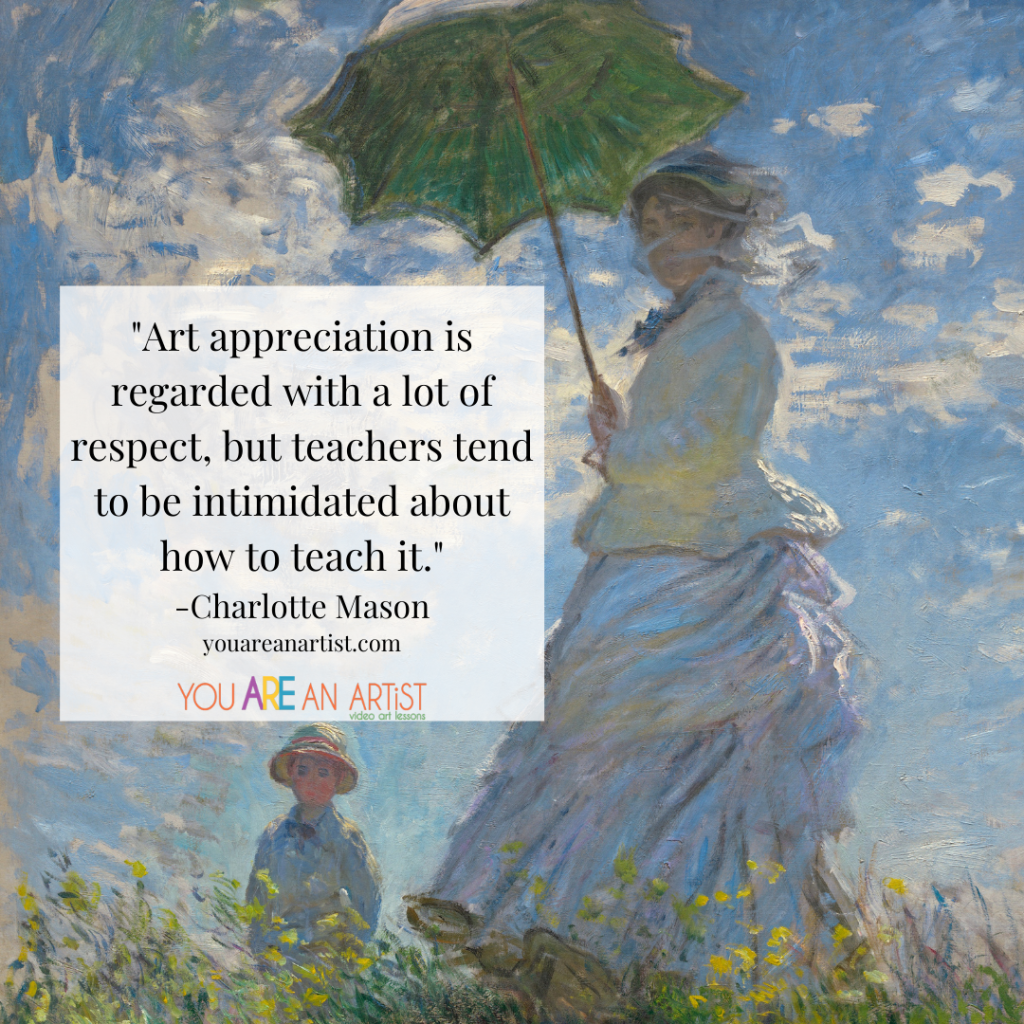
Art Appreciation For Young Children
Art is a thing of the spirit, and we need to teach it in ways that affect the spirit. We realize that the ability to appreciate art and interpret it is as universal to all people as intelligence, or imagination, or the ability to form words to communicate. But that ability needs to be educated. Teaching the technical skill of producing pictures isn’t the same as appreciating art. To appreciate, children need to have a reverent recognition of what’s been created. Children need to learn about pictures: they need to learn about them a line at a time, and as groups, by studying pictures for themselves rather than by reading about them.
– Charlotte Mason, volume six, page 214 (More in Charlotte Mason Homeschool Art Appreciation)
- Study one artist at a time.
- Study at least four prints one at a time, using careful and casual observation.
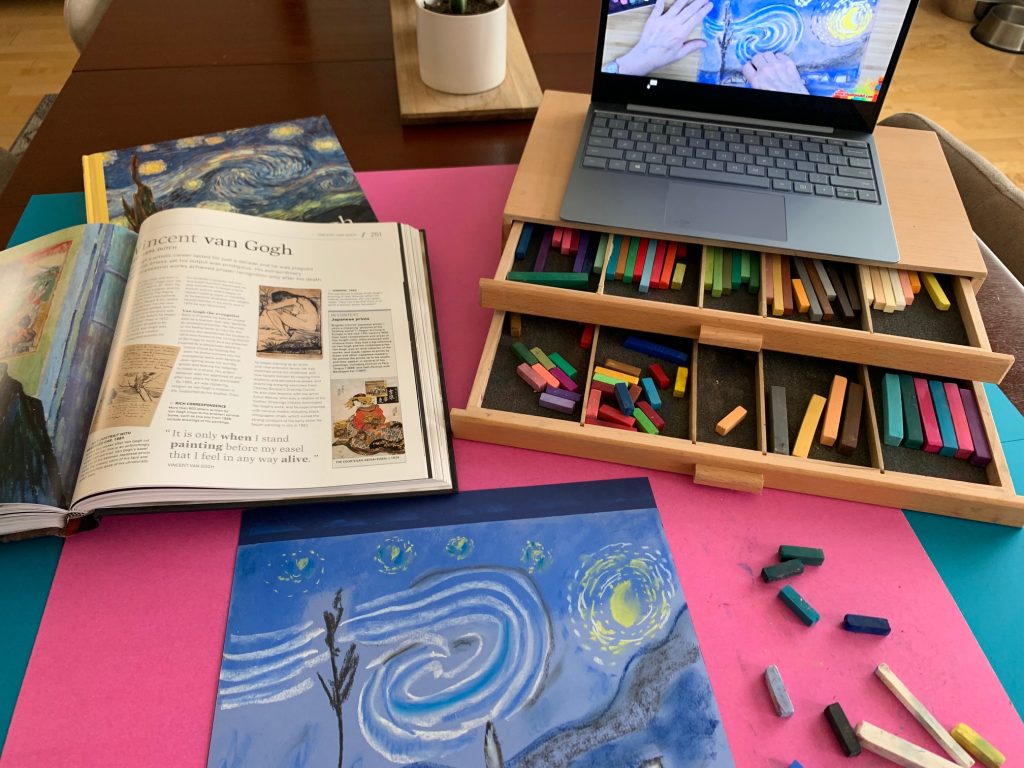
Adding Depth To Your Study for Older Children
- Follow up with learning the name of the painting and the artist’s name, if desired.
- Store the prints in a three-ringed binder or in a spiral sketchbook and review at the end of each term.
Hands-On Activities For Art Appreciation In Your Homeschool
Follow up with a coloring page from a Dover coloring book or an art lesson with Nana! Or you can simply sketch a part of the painting or the whole thing.
Remember that your goal is to spark a love for great artwork. This goal is one that can be achieved using any artist that suits your family. Here are some websites that I find helpful for viewing artwork
Art Appreciation Online
The Ultimate Guide to Virtual Art Museum Field Trips – There are so many resources you can use to enrich your homeschooling, right online! Virtual Art Museum Field Trips are one of those things!
ABCGallery.com – A large, online art collection
A Fine Arts Homeschool Curriculum For All Ages
Art and music appreciation are subjects that if not given priority, fail to be done in our home. (It’s probably safe to assume that is true for many homes.) It seems like every year I plan on adding art appreciation to our long list of subjects and at the end of the year I realize that once again I haven’t done it. It’s been so helpful to find a Fine Arts Curriculum that does all the work and organizing for me!
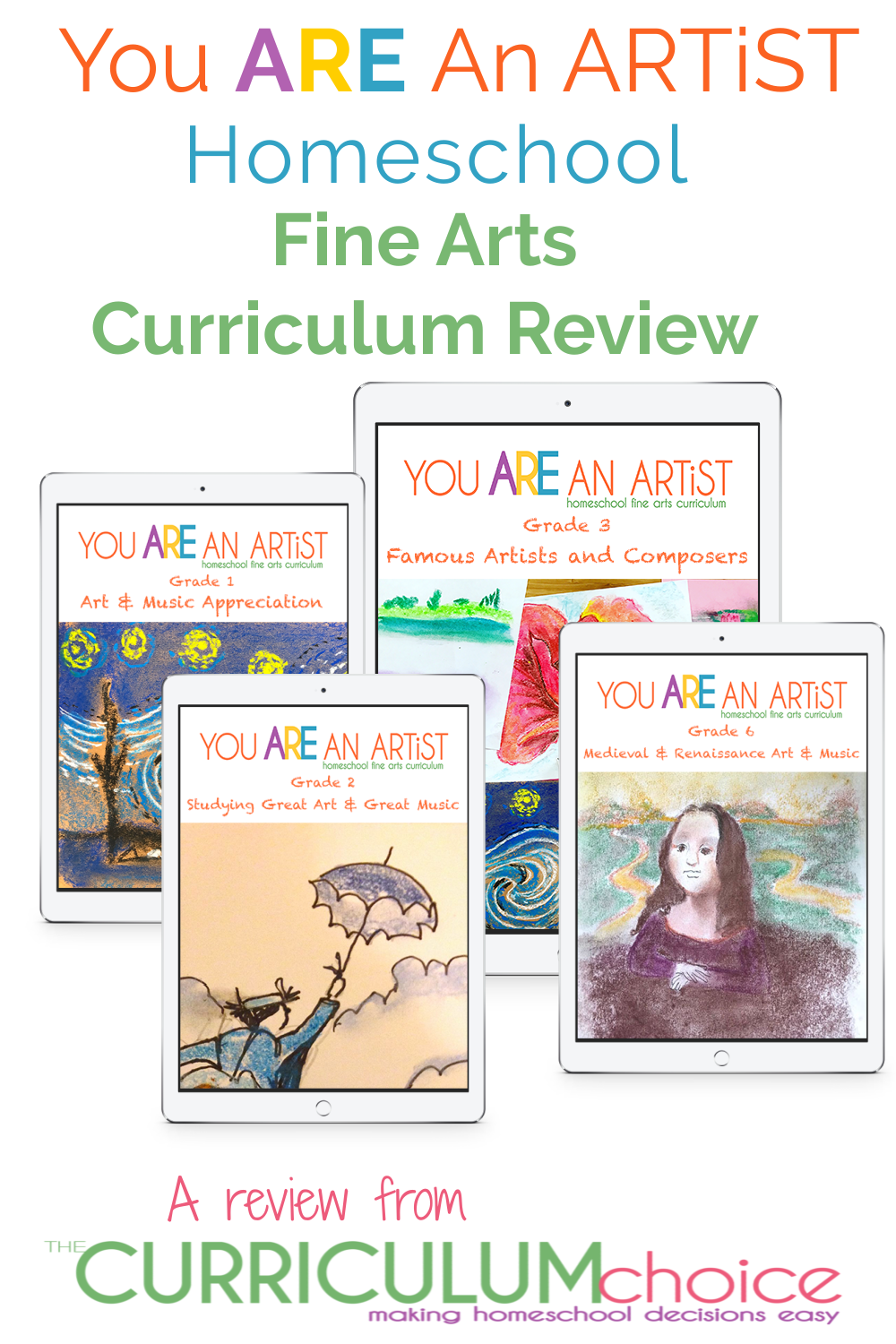
One of the reasons I have need a fine arts curriculum to help me is because I know next to nothing about art. It should be simple enough to add in picture study to accompany history. But that would require me to actually know which artists and paintings are most significant. Sure, I could probably research, learn and figure some things out. But thankfully I’ve discovered the You ARE An ARTiST Fine Art Curriculum that was written by someone much more knowledgeable than I, and has already done the work for me.
YOU ARE AN ARTIST FINE ARTS CURRICULUM
You ARE An ARTiST Fine Arts is an art and music appreciation program that works seamlessly into your homeschool studies.
The You ARE An ARTiST art and music appreciation program has 12 yearly plans based on a chronological 4-year history cycle. These are divided into the stages of learning of the classical trivium (grammar, logic, and rhetoric).
There are options for every grade level and each plans includes notebooking pages, coloring pages and YouTube links for art tutorials and listening to classical music.

